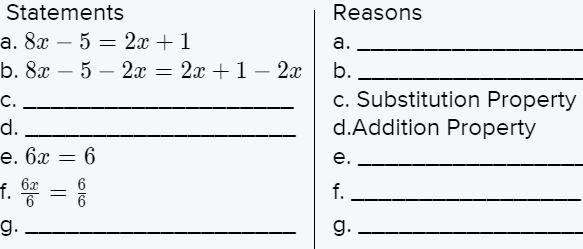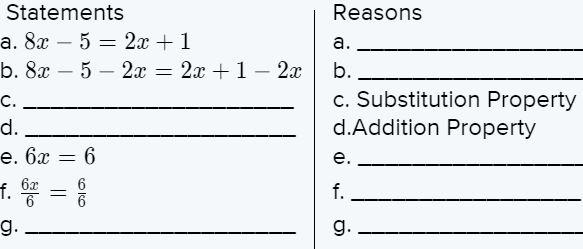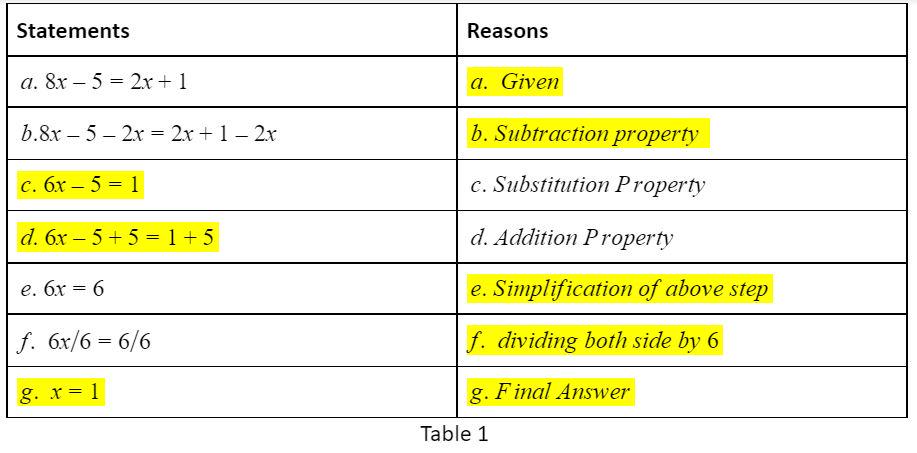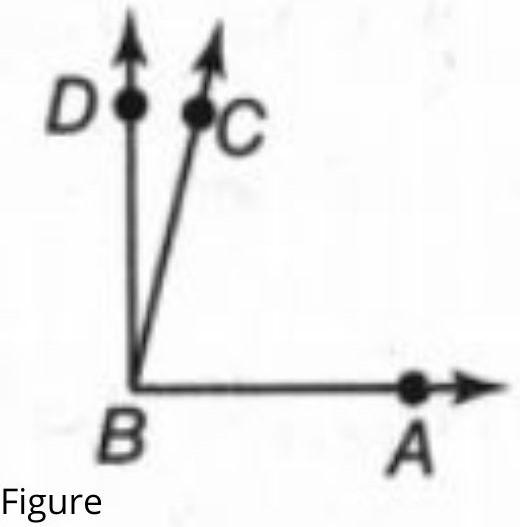Geometry Homework Practice Workbook 1st Edition Chapter 2 Inductive Reasoning and Conjecture
Page 25 Problem 1 Answer
In this question, we have been given the value: 80=m∠A
We need to state the property that justifies the statement.
By using Inductive Reasoning and Conjecture, we will calculate the result.
As we see this statement uses the symmetric property.
The symmetric property of equality states that regardless of which side of an equal sign they are on, both sides are equal.
Hence, the given statement 80=m∠A, then 80=m∠A uses the symmetric property.
It states that regardless of which side of an equal sign they are on, both sides are equal.
Page 25 Problem 2 Answer
In this question, we have been given the value:
RS=TU
TU=YP
RS=YP
We need to state the property that justifies the statement.
By using Inductive Reasoning and Conjecture, we will calculate the result.
As we see this statement uses the transitive property of equality.
The transitive property of equality states that if a is related to b and b is related to c, then a is related to c.
Hence, the given statement RS=TU and TU=YP, then RS=YP uses the transitive property of equality. It states that if a is related to b and b is related to c, then a is related to c.
Page 25 Problem 3 Answer
In this question, we have been given the value:
7x=28
x=4
We need to state the property that justifies the statement.
By using Inductive Reasoning and Conjecture, we will calculate the result.
As we see this statement uses the division property of equality.
It states that when both sides of an equation are divided by the same non-zero number, the two sides remain equal, according to the division property of equality.
Hence, the given statement 7x=28, then x=4 uses the division property of equality.
It states that when both sides of an equation are divided by the same non-zero number, the two sides remain equal, according to the division property of equality.
Page 25 Problem 4 Answer
In this question, we have been given the value:
VR+TY=EN+TY
VR=EN
We need to state the property that justifies the statement.
By using Inductive Reasoning and Conjecture, we will calculate the result.
As we see this statement uses the subtraction property of equality.
The subtraction property of equality states that if one side of an equation is subtracted, the other side must likewise be subtracted to maintain the equation the same.
Hence, the given statement VR+TY=EN+TY, then VR=EN uses the subtraction property of equality.
It states that if one side of an equation is subtracted, the other side must likewise be subtracted to maintain the equation the same.
Page 25 Problem 5 Answer
We are given m∠1=30 & m∠1=m∠2
We have to justify the statement that if the above two equations are true then m∠2=30
We will be using some algebraic properties to justify the required statement.
We are given m∠1=30&
m∠1=m∠2
By using transitive property we can say that m∠2=30
Thus, the transitive property is shown by the statement if m∠1=30&
m∠1=m∠2 then m∠2=30
Page 25 Problem 6 Answer
We are given a table as shown

Also, we are given an equation 8x−5=2x+1
We have to complete the table and prove that x=1

We will be using some algebraic properties to complete the table and prove the required result
We are given a table and an equation8x−5=2x+1
After completing the table we get,

Here, the highlighted portion in the table represent the blanks given in the table of question
Thus, we have completed the table and proved x=1 for the given equation 8x−5=2x+1

Page 25 Problem 7 Answer
We are given a figure and PQˉ≅QSˉ&QSˉ=STˉ
We have to prove PQ=ST
We will be using some algebraic properties and congruent lines concept to prove the same.
We are given a figure

Two-column proof to verify the conjecture is


Hence, we have written a two-column proof to verify the conjecture “if PQˉ≅QSˉ&QSˉ≅STˉ then
PQ=ST”, for the given figure

The two-column proof is

Page 26 Problem 8 Answer
In this question, we have been given the value:
m∠ABC+m∠CBD=90
m∠ABC=3x−5
m∠CBD=x+1/2
We need to write a two-column proof to verify each conjecture.
By using Inductive Reasoning and Conjecture, we will calculate the result.
We analyze the diagram

Since the ∠ABC and m∠CBD are complementary angles.
We substitute the values
m∠ABC+m∠CBD=90
3x−5+x+1/2=90
6x−10+x+1=90×2
7x−9=180
Further solving, we get
7x=189
x=189/7
x=27
Hence, the value of x=27.
Since the ∠ABC and ∠CBD are complementary angles.
We substitute the values and analyze the diagram

Page 26 Problem 9 Answer
In this question, we have been given the value: I=prt
We need to solve the formula for r and justify each step.
By using Inductive Reasoning and Conjecture, we will calculate the result.
We divide the whole formula by pt to solve for r
I/p×t=p×r×t/p×t
I/p×t=r
Hence, the formula for r is r=I/p×t. Since we divide the whole formula by pt and using the formula of simple interest.
